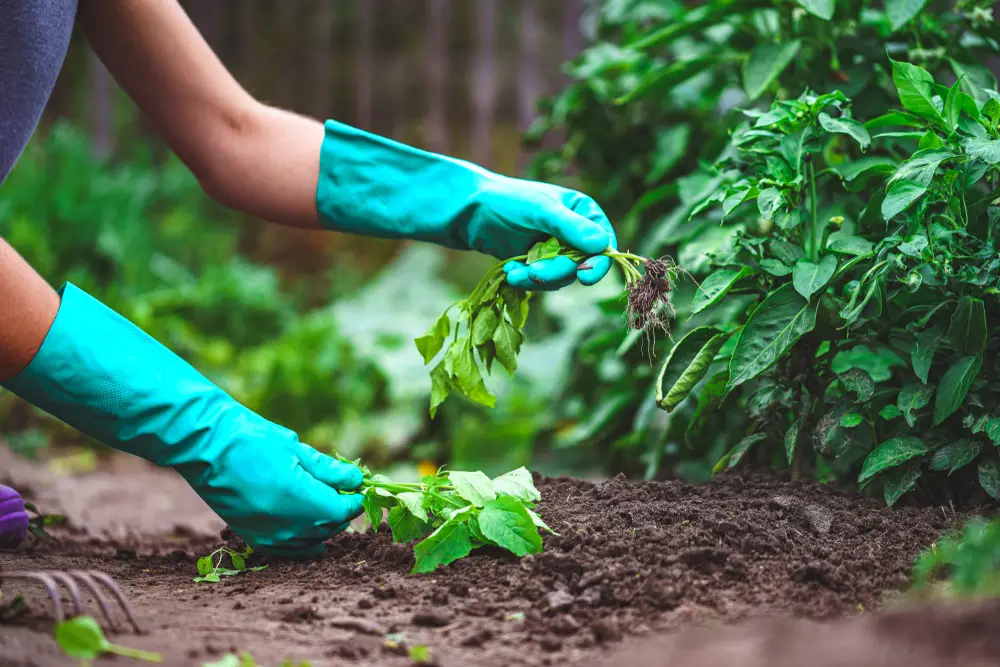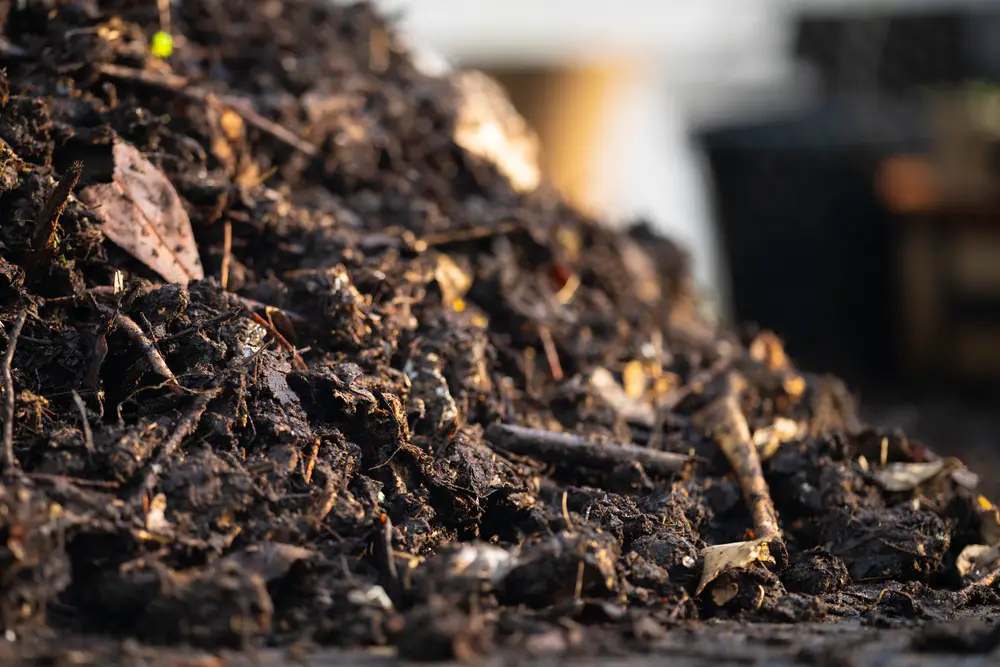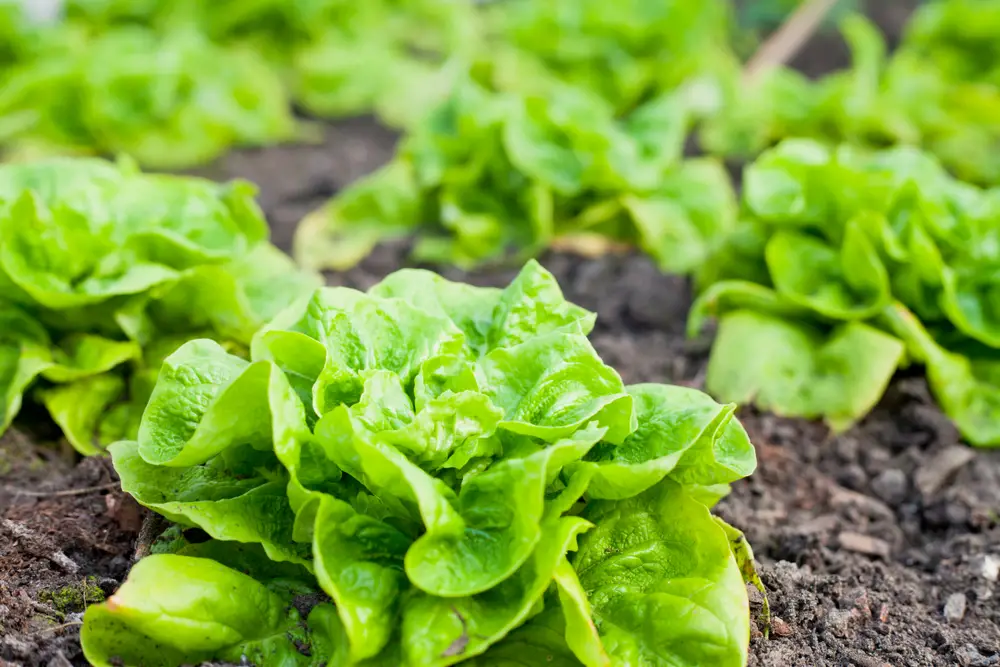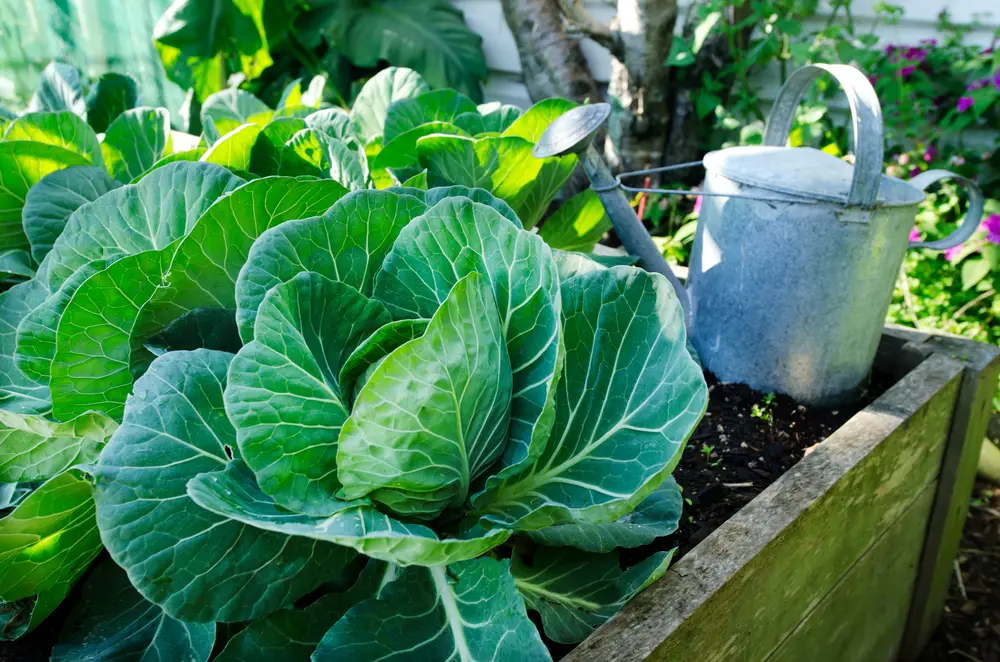To learn how to maintain their vegetable garden, I invite my clients to experience seasons from the perspective of a grower.
They’re familiar with the seasons in general and how they pertain to where they live (just as you are). But thinking of those seasons from a grower’s perspective is different from a homeowner’s perspective.
As a homeowner, you turn up the heat to prepare for the winter and turn it down for the summer.
As a grower, you plan and prepare during the winter so you are ready to spring into action once your growing season begins.
More importantly, I take the time to explain the why behind these seasonal tasks. After, my clients know what to do and why it’s essential to do it.
Now, I’m going to do the same for you and show you how to maintain your vegetable garden.
Let’s start with the tools you’ll need.
1 – Gather Needed Tools
These are the basic tools I recommend for how to maintain your vegetable garden as well as planting and growing vegetables:
- Gardening gloves
- Shovel
- Trowel
- Watering can
- Hose
- Hand pruners
- Wheelbarrow
- Compost bin
- Old bed sheets
- Sun protection (for you)
2 – Follow Proper Safety Procedures
Generally, gardening is safe for you to do.
However, I always recommend the following self-care strategies:
- Protect yourself from the sun
- Stretch
- Listen to your body
- Stay hydrated
- Avoid over-exerting yourself
As a therapeutic horticulturist, I always have extra gardening gloves, an extra hat, a pair of sunglasses, sunscreen, and a folding kneeler/seat with me.
I’ve lost count of the times I have gotten a client a glass of water, but I’m always happy to do it.
It’s easy not to think about these things. It’s even easier to get lost in what you’re doing, but keeping them in mind is essential.
In other words, prepare for that beforehand and pay attention to how you feel.
3 – Spring Maintenance

Spring is an exciting, busy time in the vegetable garden! Before we get to how to maintain your vegetable garden, there’s lots to do in springtime, with most of your work focused on preparation.
Let’s start with cleaning up.
Clean Up Excess Organic Matter
Start by cleaning up any leaves, twigs, dead plants, grass clippings, and any organic matter left over from last year to prepare for planting. I put mine in the compost bin.
But wait until temperatures are consistently at 50°F (10°C) to clean up.
Many beneficial insects, such as butterflies, bees, and ladybugs, spend the winter living in this material. If you remove the material too early, you will remove them from your garden. They will move on once temperatures are warm enough.
In addition to being a habitat for many good garden insects, this layer of organic materials also helps keep the weeds in check until you are ready to plant.
Weed As Much As Possible
This time of year is when I most thoroughly weed. I spend extra time removing unwanted plants while they are still small and manageable.
However, this can still be a time-consuming job, even during this time.
Just keep doing your absolute best to remove all of them. Remind yourself that whatever work you do now will save you time (and frustration) for the rest of the season.
Every weed you remove is potentially one less weed you have to deal with later. Additionally, every weed you remove is one less plant competing with your vegetables for light, water, space, and nutrients.
So, thoroughly weeding before planting and then keep on top of it by weeding a little bit every day or two.
And here’s some good news if you take this necessary step. Whatever weeds grow back will be no match for your vegetable plants as the season progresses.
Water Your Vegetables
You probably already know this, but it’s worth repeating that water is essential for your newly planted vegetable garden.
In fact, consistent watering is important to every stage of vegetable growth. Any dry periods will likely stress your vegetables, affecting whether they produce the delicious food you’d like to eat.
Seeds are near the top of the soil and are most prone to drying. Water them daily to ensure even germination.
In fact, generally, water a little bit daily for the first month after planting your vegetables.
Even transplants don’t have deep roots in spring, so top watering (or watering plants from above) is effective.
Shift to watering underneath your vegetables’ foliage for longer and less frequently as your plants get bigger and their roots become more established.
A good rule of thumb is to attempt to give plants in your vegetable garden 1-2 inches of water per week throughout the growing season. This will vary with the weather (based on how much rain your garden receives or how hot the weather is).
Cover Your Vegetables
Sometimes, the weather doesn’t play by the rules we wish it did.
For example, you probably already looked up your area’s hardiness zone and microclimate information. And you prepared accordingly.
But then the weather forecast changed, and now it’s showing colder-than-expected temperatures, maybe even frost.
So, now what…?
In this case, you only need to cover your plants overnight. Using any old sheets works just fine.
Unless plants are very small and close to the ground (such as in spring), ensure something holds the covering up other than your plants (garden stakes, trellises, tomato cages, etc.).
Don’t forget to place something around the perimeter of your coverings (rocks, sticks, etc.) to weigh it down and protect your vegetables from frost.
Be sure to remove the coverings the next day.
4 – Summer Maintenance

Summer growing can catch you off-guard!
By then, you’ve spent several weeks helping your vegetables establish strong roots. So, it can be surprising when they start growing quickly in the heat of longer summer days.
How to maintain your vegetable garden during the summer, you’ll need to keep up with regular watering (remember, 1-2 inches per week) and weeding, but summer also means it’s time to pay attention to other tasks.
Let’s start with pests and diseases.
Pests And Diseases
Each plant in your garden is vulnerable to certain pests and diseases.
The best things you can do to manage these issues are the following:
- Care for your soil (in the summer, I recommend adding compost or mulching)
- Regularly water your vegetables
- Observe them often
For the last point, you’re looking for specific things, such as the following:
- Holes in the leaves
- Insect eggs
- An insect you don’t recognize
- A powdery substance on the leaves
Noticing these issues early helps you know what you’re dealing with and deal with it promptly.
This goes a long way toward you and your vegetables’ success.
If pest or disease challenges arise, use management techniques that will preserve the health of your soil.
In addition to caring for my soil, I opt for organic pest management techniques because I don’t want them in my food.
Feed Your Soil
Your soil is where your vegetables get the majority of their food and water.
If your soil is healthy, your plants will be healthy and productive. If your soil is not healthy, your plants will struggle to grow as well and be at greater risk of disease or pest damage.
Your job is to make sure the soil has the nutrients your vegetables need. They’ll extract those nutrients each season, so you need to add them back in.
Compost is excellent for this.
In the summer, I like to add some finished compost to my garden to give it a nutrient boost.
I also add grass clippings or straw as mulch around many of my plants. This layer of organic matter feeds the soil, protects it, and helps it retain water.
I avoid synthetic fertilizers and pesticides in my vegetable gardens because while they give plants a temporary boost, they also harm many of the beneficial microorganisms in the soil.
5 – Autumn Maintenance

By this point, you have likely been eating food from your garden for months (and hopefully cleaning them first).
But as you head from the end of summer into the beginning of autumn, many of your vegetables will have matured.
So, it’s time to do something about all that food you’ve grown.
Harvest And Preserve Your Vegetables
After all the work you have done to maintain your vegetable garden, remember there is something deeply satisfying about growing your own vegetable garden. It is an achievement unto itself.
But, depending on what you’ve grown and how much, harvesting and processing your homegrown produce can be laborious.
I process hundreds of pounds of food from my garden each year!
This means I’ll spend entire days in the latter part of the growing season harvesting and processing what I’ve grown.
I find it helpful to plan what I would like to do with each kind of produce in advance and, if possible, finish working with each before moving on to the next one.
For example, I will finish canning my tomatoes before I move on to pickling beets. Then, I will finish pickling the beets before I move on to fermenting cabbage.
Food preservation is hard work that happens all at once, but it is also a lot of fun and well worth it!
In the moments when I feel overwhelmed with all of the work, I remind myself how good it feels to reach into my pantry for a jar of salsa verde or tomato sauce in February when access to the fresh goodness of summer is so distant.
You have several techniques for processing your garden produce, such as:
- Canning it
- Freezing it
- Dehydrating it
- Fermenting it
- Or sometimes combining a few of these methods
The only thing limiting you is how far you choose to go with your own creativity.
This is one of the best parts of growing, especially when you get to share it with others.
Soil Care
The days are shortening. You’re gathering the last food from your garden.
Though hopefully you’ve been caring for your soil all season long, fall is the most natural time to make big moves in terms of your soil. This is because your beds are predominantly empty after your harvest. Additionally, whatever you add will have several months to decompose before you are planting again next spring.
You’ll need to decide how you want to go about replacing nutrients the plants you grew over the season took out.
There are three common methods:
- Add compost
- Add leaf mulch
- Or plant a cover crop
Let’s start with adding compost.
Add Compost
Adding finished compost is as easy as shoveling it on top of your soil and leaving it.
If you are no longer growing in your garden beds and won’t be until the spring, you have the freedom to add unfinished compost or manures that may otherwise burn your plants. They will have broken down enough by the time next spring has arrived to be in usable form for your plants.
If you haven’t already set up a compost, the slower pace of autumn, not to mention all of the decaying organic matter everywhere, is a great time to do so. This way, you’ll have a ready-made supplement for next year’s vegetable garden.
Add Leaf Mulch
Adding leaf mulch is simply gathering up a layer of leaves and adding them to protect the top layer of your soil as they decompose.
You might want to run over piles of leaves with your lawn mower before adding them to your beds. Not only will this prevent them from sticking together and forming an impenetrable layer of leaves, but it will also speed up the decomposition process, so the nutrients you are adding will be ready for your plants to use next growing season.
Plant A Cover Crop
You plant a cover crop to protect and nutritionally enhance the soil.
The crop covers the soil and protects its surface over the winter (much like the layer of organics referred to above).
Once mature, you cut the cover crop and till it into the soil, where it decomposes and deposits nutrients.
Even if you only use the plants you grew over the season and some leaves, it is really helpful to cover your soil with a layer of organic matter over the winter. This protects it from eroding, and as the organic materials break down, some nutrients are recycled and returned to the soil.
6 – Winter Maintenance

It is possible to grow some vegetables throughout the winter in all but the coldest climates. But planning for winter gardens begins at the end of summer, and you do need some special equipment to protect your vegetables from cold temperatures and maintain your vegetable garden.
Many gardeners spend this time finishing up the last of their garden work for the year.
Winter is also the time to reflect on what worked for you this past season and decide what you want to do next year.
Personally, I always have a few garden-related books I save for this time. I’ve been gardening for years, but there’s always lots to learn.
Before I know it, seed catalogs start finding their way into my mailbox (you request these from seed company sites). This is a great time to start putting together a plan for the following season.
Also, don’t forget to take a break. You earned it!

